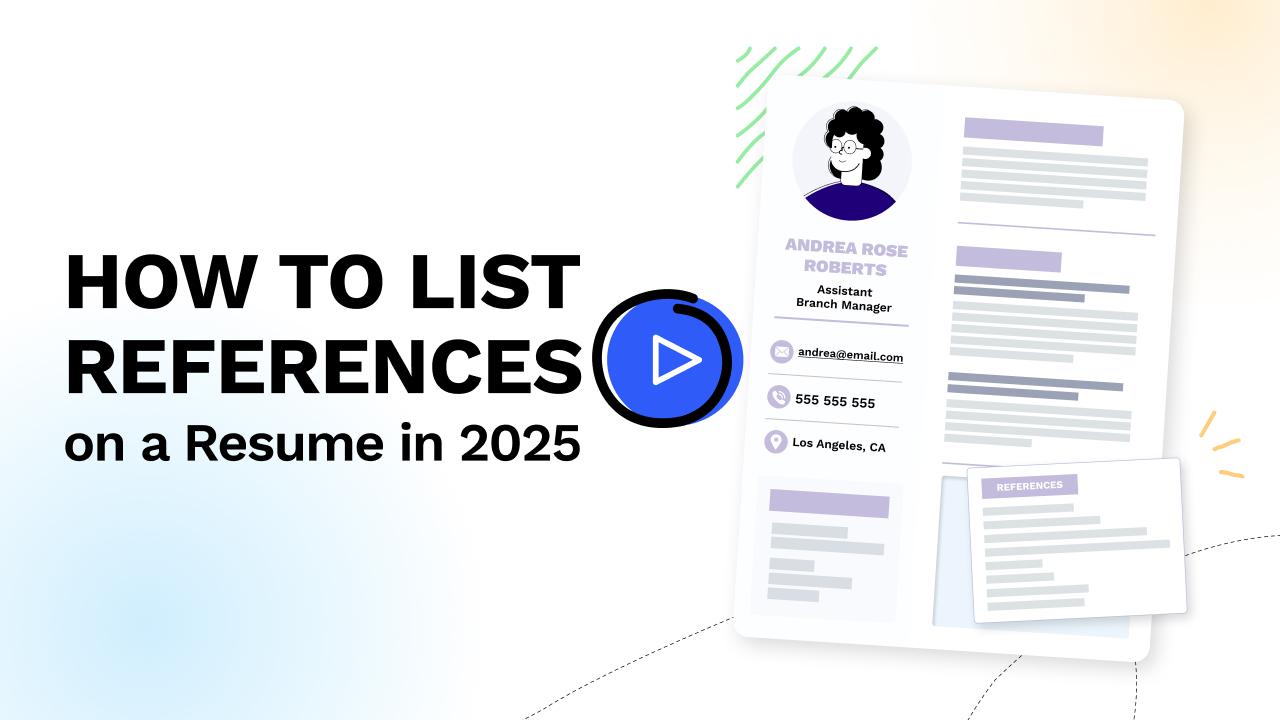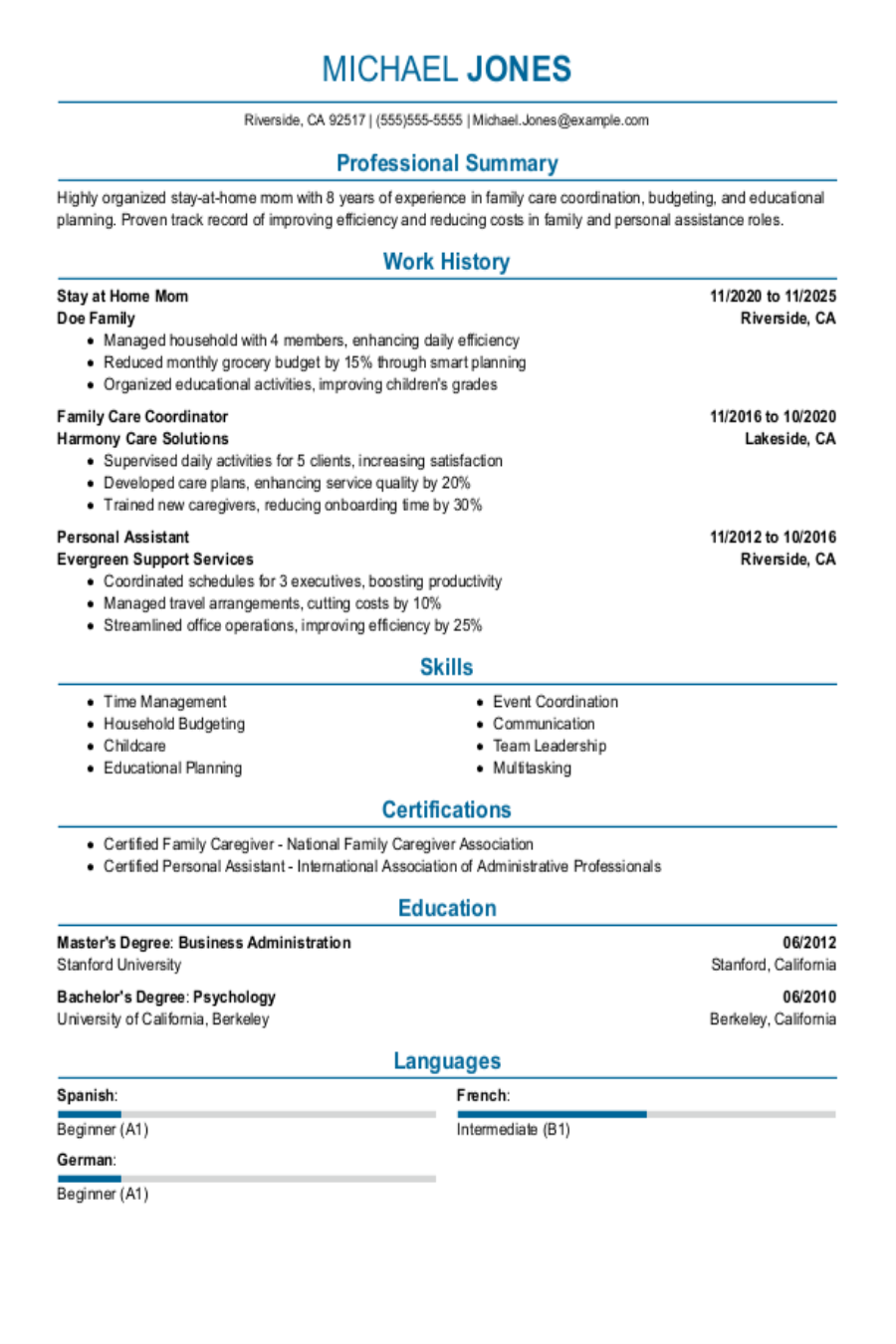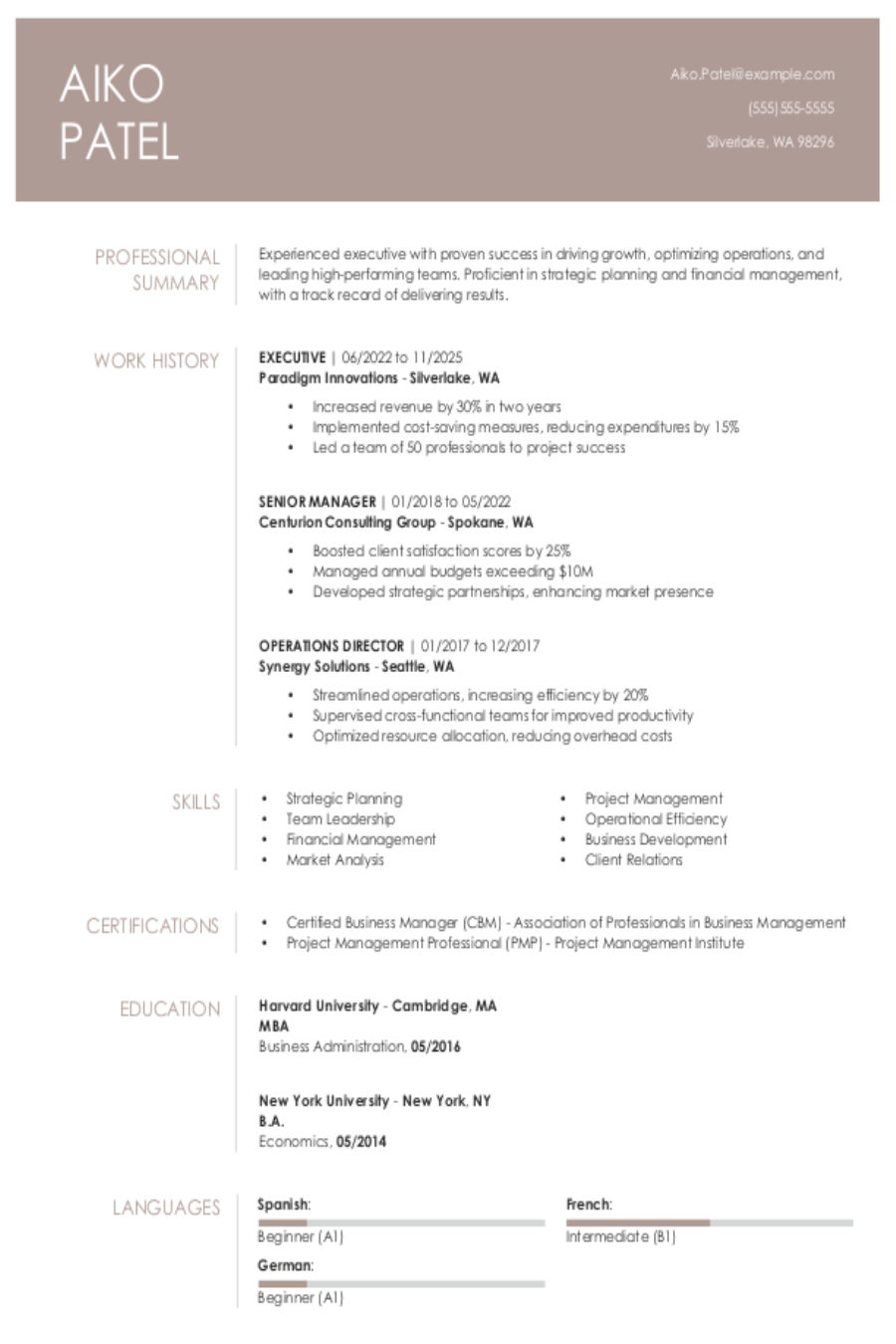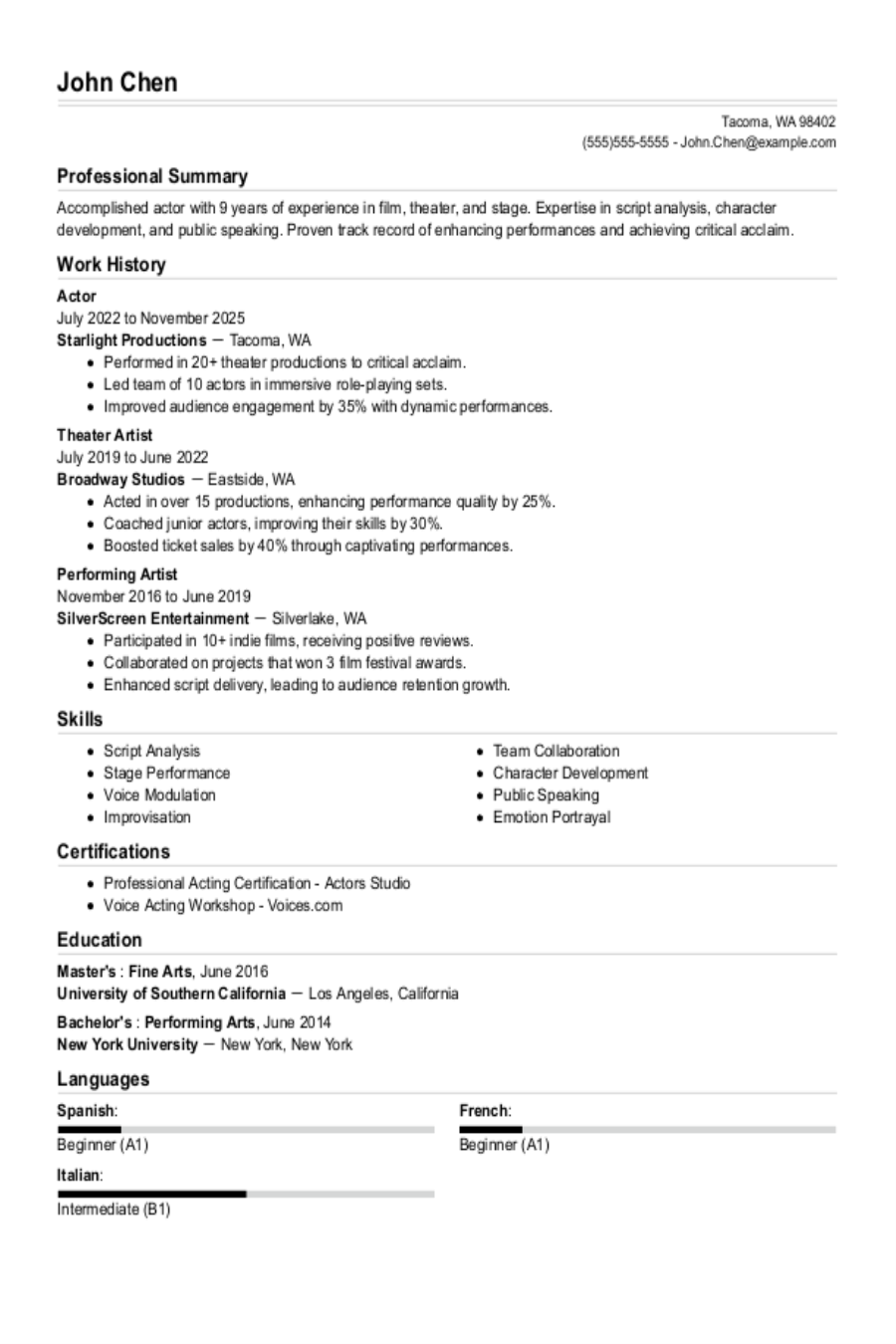Many job seekers have questions about how and when to share references with a potential employer. Do references go on a resume, or should they be on a separate page? Do you always need to provide references in the first place? Read on to learn the right way to share professional and personal references. Here we will cover:
- How to decide if you need references on your resume
- How to format your references
- How to create your list of references, including a reference letter template and examples

Ready to write a resume that showcases your experience? Use our AI Resume Builder. This tool uses your career details to build a unique and professional resume in just minutes.
Do I Need References on My Resume?
For most job seekers, it isn’t advisable to add references directly on your resume unless you are specifically asked to do so in the job ad. Since most employers check references only if they are planning to make you an offer, they don’t often expect to see them on your actual resume.
Resume real estate is limited. You’re better off using your resume’s space to convey your experience and professional skills than filling it with references that employers aren’t expecting.
The best way to prepare references is by writing up a list on a separate sheet of paper so that you’re ready to produce it when and if it is requested.
If you wish to indicate that you have references that you are prepared to provide at a later date, add the phrase references available upon request at the bottom of your resume. This is preferable to including the references on your resume. You may also write a cover letter that mentions your willingness to provide references when requested.
How to Format Resume References (With Examples and a Resume References Template)
How you format your resume references will depend on how you plan to provide the information to a potential employer. Most job seekers will want to create a separate page for references, but in some limited cases, references will appear as a section on a resume. This is usually only done if the employer specifically requests it.
Either way, your resume references will need to be formatted properly. Whether you write a resume that includes a references section or you create a separate list, the following examples will help you nail the formatting. For more resume reference examples, review some effective resume examples from professionals in your field.
How to format references on a separate page (resume references template)
For most job seekers, creating a separate page that contains resume references and their contact information is the way to go. We suggest creating a page with a header that is the same as or similar to the header on your cover letter and resume.
Each entry on the sheet should be uniformly formatted. Here is what each entry should include:

The reference description should be short, just a few words about how you know the person you are offering as a reference. It could be something like, “X was my manager at the Polk Street AT&T store location from 2021-2023.”
Download our resume reference example sheet above to create your own.
How to format a resume list of references section (example)
If the job description explicitly states that you should include references on your resume, you can add a resume references section to your document to accomplish that. This section would sit alongside your professional summary, work experience, and skills sections.
Pro tip
Make sure your resume is solid before you apply, with Resume Now’s free AI Resume Review. Upload your resume to receive AI-powered feedback on your resume’s content, style, and customization.
Here are some resume references examples to show you how that section might look on your document:
How to Create a List of References
Typically, recruiters like to see at least three references for a role. Usually, you should provide three professional references, but for students or others who are just entering the workforce, a relevant personal reference may be acceptable.
How to choose professional resume references
When choosing professional references, you should ask people with whom you’ve had positive work relationships and who can speak to your skills, experience, and work ethic. This can be a former manager or someone who you managed. You can also choose a former colleague you’ve collaborated with who can attest to the quality of your performance.
If you have limited work experience, you can also choose someone who you have worked with on a volunteer project or mentored outside of work, say through a networking organization. To keep your job search private, avoid asking your current boss or coworkers for a reference.
How to choose personal resume references
A personal reference, also known as a character reference, is someone whom you have not worked with in a professional setting but who can speak to your character and soft skills.
This should be someone you have known for at least a year who can give examples of your values and positive personality traits. Personal references can be individuals from any area of your life, school, sports, or volunteer work, but you should avoid adding family members or your spouse as a reference.
How to Request a Reference Letter
Choose carefully
You only want to provide references who can speak enthusiastically about your abilities. Choose a former manager or colleague with whom you have worked closely. In most cases, you’ll want to avoid asking your current boss or coworkers for a reference to keep your job search discreet.
Ask before you share
Once you have created a list of references, reach out to them individually to get permission. For that reason, you’ll want to be sure that they have no reservations about recommending you for the role before you offer up their contact information. Ask if they would be comfortable recommending you for the role. If they say yes, proceed with the following steps.
Send an email
Once they have agreed to provide a reference, send your contact an email with a link to the job ad, your current resume, and the name of the recruiter who will be reaching out to them. Especially if an employer wants them to submit a reference letter, consider outlining some talking points to cover.
Set up a time to talk
Unless you currently interact with your references on a regular basis, it’s a good idea to set a time for a quick catch-up before the recruiter calls them. This will give you an opportunity to answer any questions they might have. If there is a certain area of your background that you’d like your reference to focus on, say, your keen analytics skills or your stellar customer service record, this is the right time to discuss that.
Confirm their contact information
Ask each reference for their preferred method of communication—that is, email or telephone. Then, confirm that you have the correct contact information. Finally, confirm their current job title and company.
Follow up with a thank you
Once a recruiter has reached out to your reference, send them a thank-you note. Whether the reference is given via phone or email, it takes time and planning. Write a note that acknowledges their generosity and offers to reciprocate when needed.
Key Takeaways
- Always create a separate references page unless otherwise instructed.
- Choose three to five references. These should mainly be professional references and one personal reference.
- Choose your references carefully; only ask people who will have positive things to say about your performance and personality.
- Ask permission from your references before sharing their contact information.
- Use the right formatting when sharing your references.
Resume References FAQ
Yes! In fact, for most job seekers, it’s best not to include references in the resume. Instead, create a separate page for resume references and their contact information to have handy in case the employer requests them later. An employer will typically only check your references if they are planning to hire you, so there is no need to take up valuable real estate on your resume by listing references.
If you have no professional references, you can use personal references who can speak to your work ethic and character. For example, a college professor, a coach, or a leader of an organization where you have volunteered would make suitable references. Typically, this is most appropriate for people who are new to the workforce.
Yes. Employers use references to verify the information you provided them. A former employer can vouch for your skill level. They can also give a potential employer an idea of what it’s like to work with you. When choosing professional references, you should ask people with whom you’ve had positive work relationships who can speak to your skills, experience, and work ethic.
Heather is the Content Strategy Manager for Resume Now and a Certified Professional Resume Writer (CPRW) with more than ten years of experience writing about job search and career topics. She is based in San Francisco.
More resources

Resume Now Spotlights 14 High-Innovation, High-Growth Jobs That Pay $60K+
Resume Now s latest report highlights some of the highest payi...

Bad Cover Letter Examples: How To Fix Those Annoying Mistakes
Check out four sample cover letters and then learn from a pro...
![Communication Skills for Your Resume [40+ Examples and How to Improve Them] Communication Skills for Your Resume [40+ Examples and How to Improve Them]](/sapp/uploads/2025/08/Communication-skills.png)
Communication Skills for Your Resume [40+ Examples and How to Improve Them]
Good communication skills can propel your personal and profess...

Stay At Home Mom Resume: Examples, Templates and Tips
Build & download your Stay At Home Mom resume in a few simple ...

Executive Resume: Examples, Templates + Tips
Build & download your Executive resume in a few simple steps. ...

Acting Resume: Examples, Templates and Tips
Our acting resume examples will demonstrate how you can build ...
